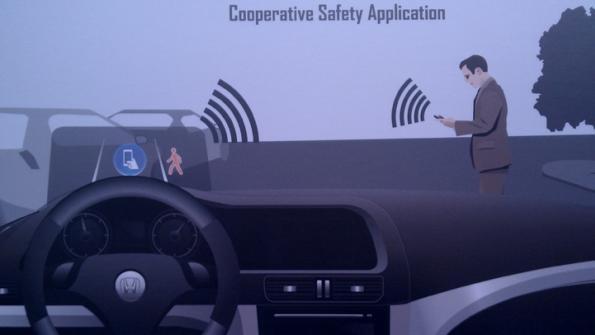Editor’s Note: We are excited about so many new possibilities for smartphone owners emerging every day. The members of our Mobile Design & Development Department feel so proud each time they create another useful smartphone app. We are sure they’ll be even more proud when they learn how big companies like Honda are starting to use smartphones to protect human lives and reduce car accidents. That’s why our editors decided to publish another interesting article on new developments in the world of mobile technology.

Connectivity is growing by leaps and bounds, and now, Honda has announced vehicle-to-vehicle communication (V2V) technology that allows cars to sense an approaching vehicle and provide timely warnings to other drivers. Similar technology also promises to facilitate safety on the roads and sidewalks by offering vehicle-to-pedestrian communication (V2P) and vehicle-to-motorcycle (V2M) based on the same principle. The approach is founded on Wi-Fi direct that is much like the wireless networks that most people are familiar with at home, school and work.
V2V Enhancing Driver Safety
Operating on the principles of Dedicated Short Range Communication (DSRC), V2V is a system in which signals are transmitted from one object to another, and the technology helps to show where the different cars, motorcycles or pedestrians are located in relationship to one another. In V2V, car dashboards are outfitted with a display that alerts drivers of the danger that is present. The system is currently being tested by the United States Department of Transportation (DOT) on roads in and around the Ann Arbor, Michigan area. As part of the test to determine whether the new technology can actually help to save lives on the highways, eight different vehicles along with several motorcycles have all been outfitted with transmitting and receiving technology. Information that is gleaned during the testing is expected to impact whether the latest safety features will soon be mandatory in all vehicles.
V2P: Protecting Pedestrians
Pedestrians also have a chance to benefit from the latest Wi-Fi direct technology, and anyone with a smartphone will soon be able to receive alerts about the dangers of nearby vehicles on the road. Because the system relies on communication that is much like traditional WiFi, smartphones can easily transmit signals to nearby vehicles that are outfitted with the same technology. The DSRC operates on a 5.9 GHz band, and the Honda system uses motion sensors and a phone's GPS to determine the exact location of both parties and the chance of an accident occurring. Alerts will readily appear on a pedestrian's phone with assistance from an app that is especially designed for the purpose. Industry experts predict that the latest technology will simply merge into most car's existing infotainment systems.
The V2V system has a range that is more than 200 yards, and in distinction with regular Wi-Fi, the DRSC connects individual devices with each other without relying on a central access point. Traditional Wi-Fi takes up to eight seconds for a connection to be established because devices must first communicate with a wireless access point. In the V2V technology, two devices can join in less than a second, and this can help to provide the timely alerts that may be able to prevent accidents and save lives. The fast-connecting feature ensures that drivers and pedestrians can always know where others are, and it helps to reduce the chances of a collision.
Driving in Connected Cars
In addition to promising a safer way for pedestrians, vehicles and motorcycles to interact, the new technology also offers a wide variety of benefits to drivers. Experts predict that by installing Wi-Fi in cars, operators will have more access to content and can ensure that their vehicle is fully wired to communicate with their home network, other drivers and even pedestrians. Music, addresses and other entertainment files can also be transferred from a vehicle or pedestrian smartphone to a home or business network, and this can also ensure that passengers have access to movies or books while traveling. While the technology may not be available to everyone for another five years, it may provide an outstanding way to reduce the more than 4,000 fatal accidents that occurred in 2010 alone.
Andrew Handley is a professional writer covering the latest car and driving safety breakthroughs at ProctorHonda.com. You can reach him via his Google+ page.